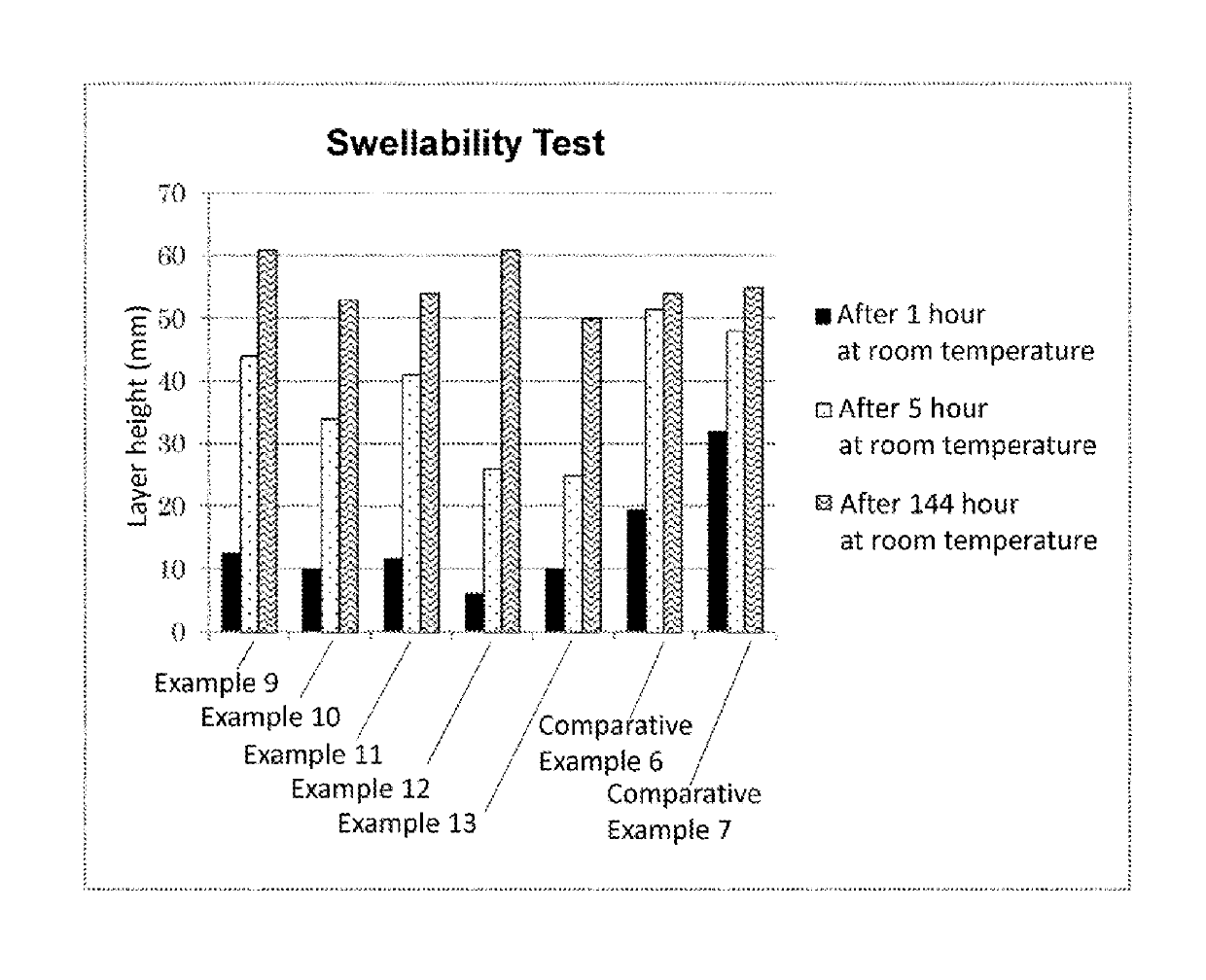Organic-inorganic composite particles
a technology composite particles, which is applied in the field of organic-inorganic composite particles, can solve the problems of reducing solubility, affecting the dissolving operation, and affecting the process, so as to reduce the agglomeration and lump formation of pva-based resin, improve the powder flow characteristics, and suppress the pva-based resin swelling
- Summary
- Abstract
- Description
- Claims
- Application Information
AI Technical Summary
Benefits of technology
Problems solved by technology
Method used
Image
Examples
example 1
[0178]
[0179](Preparation of Coating Liquid)
[0180]First, 62.39 parts by weight of methanol was added to 30.80 parts by weight of a tetramethoxysilane oligomer (methyl silicate) having a weight-average molecular weight of 550, a silica content of 52 wt % in terms of SiO2 and a tetramethoxysilane content of 0.2 wt % or less, and 0.31 parts by weight acetylacetone aluminum salt powder was further added thereto, after which these materials were stirred and homogeneously dissolved at room temperature. Subsequently, 6.50 parts by weight of desalted water was added, and the resultant was stirred to homogeneity and then left to stand and aged for 3 days at room temperature in a hermetically closed vessel so as to allow hydrolysis and polycondensation to proceed, whereby 100 parts by weight of a silicate hydrolysis solution having a silica content of 16 wt % in terms of SiO2 was obtained. In a separate vessel, 20.6 parts by weight of the thus obtained silicate hydrolysis solution was weighed ...
example 2
[0187]Silica-coated powder of the resin B (3 wt % silica-coated product) was obtained in the same manner as in Example 1, except that the resin B was used as the raw material powder and the amount of methanol used for dilution in the coating liquid preparation was changed from 31.25 g to 23.4 g.
example 3
[0188]Silica-coated powder of the resin C (3 wt % silica-coated product) was obtained in the same manner as in Example 1, except that the resin C was used as the raw material powder and the amount of methanol used for dilution in the coating liquid preparation was changed from 31.25 g to 23.4 g.
PUM
| Property | Measurement | Unit |
|---|---|---|
| Length | aaaaa | aaaaa |
| Length | aaaaa | aaaaa |
| Temperature | aaaaa | aaaaa |
Abstract
Description
Claims
Application Information
 Login to View More
Login to View More - R&D
- Intellectual Property
- Life Sciences
- Materials
- Tech Scout
- Unparalleled Data Quality
- Higher Quality Content
- 60% Fewer Hallucinations
Browse by: Latest US Patents, China's latest patents, Technical Efficacy Thesaurus, Application Domain, Technology Topic, Popular Technical Reports.
© 2025 PatSnap. All rights reserved.Legal|Privacy policy|Modern Slavery Act Transparency Statement|Sitemap|About US| Contact US: help@patsnap.com



